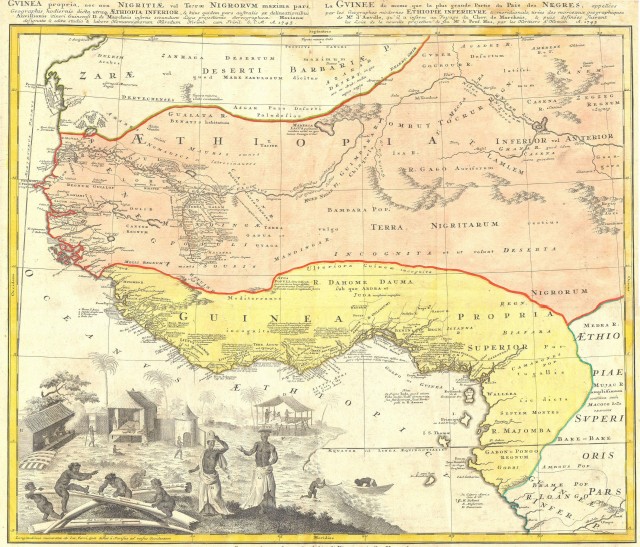West African Trading Settlements
Europeans began setting up trading posts on the coast of western Africa in the mid-1400s. The result was a string of European settlements from present day SENEGAL to the coast of modern NIGERIA. Centuries later these trading posts became the bases for European colonial claims in western Africa.
European traders referred to sections of the coast by the main goods traded there: grain, ivory, gold, and slaves. The Grain Coast (in modern LIBERIA) and the Ivory Coast (in the country of the same name) had relatively few trading posts. The greatest number of settlements appeared on the Gold Coast (now part of GHANA).
The Portuguese, the first Europeans to visit the western coast of Africa, established trading posts on the CAPE VERDE Islands in the 1460s and began building forts on the Gold Coast in 1482. For more than a century they were the only Europeans in the region. After 1621 however, a Dutch trading firm called the West India Company captured some of Portugal's African bases. Similar trading companies formed in England, France, and Denmark and became active on the African coast. In addition, the German realm of Brandenburg-Prussia founded several trading settlements that were operated by Dutch merchants.

The trading companies and the nations they represented tended to concentrate on particular regions. The French established their influence in Senegambia, the region around the Senegal and Gambia rivers. The English gained the dominant position in SIERRA LEONE. By 1700 the Gold Coast was crowded with 23 forts and some smaller trading posts, mostly built by the English, Dutch, Danish, and Brandenburgers. As the demand for slaves in the Americas grew, European interest shifted eastward to the Slave Coast, the area that is now BENIN and NIGERIA. The English, French, Portuguese, and Dutch were active there, and the first three erected permanent forts. All along the coast, however, much commerce took place outside the settlements as African traders dealt directly with European ships or even individual Europeans who were not attached to trading companies.
European trading settlements ranged from mud-and-thatch buildings staffed by one or two people to great stone forts that housed 80 Europeans and an even larger number of African servants. Towns grew up around some of the major trading settlements—for example, Elmina developed around the Portuguese fort of Sao Jorge da Mina on the Gold Coast. Europeans in the settlements frequently formed relationships with African women. By the 1700s their Creole descendants had created powerful families that played an increasingly important role in local trade and politics.
Europeans had no political control over their African neighbors, though they sometimes formed alliances with one party in a local dispute. The Europeans also had little influence on local religious practice. The efforts of Western missionaries in Africa did not really get underway until the 1800s.
Some European settlements were fortified and armed to protect against attack by rival Europeans. Maintaining such forts became too expensive for the companies, however, and after the mid-1700s the European governments took responsibility for them. After the Atlantic SLAVE TRADE ended in the 1800s, the trading settlements lost their original purpose. Instead, they became the starting points for imperialist expansion as the European nations carved out colonial claims in Africa. (See also Colonialism in Africa, Ivory Trade, Trade, Travel and Exploration.)